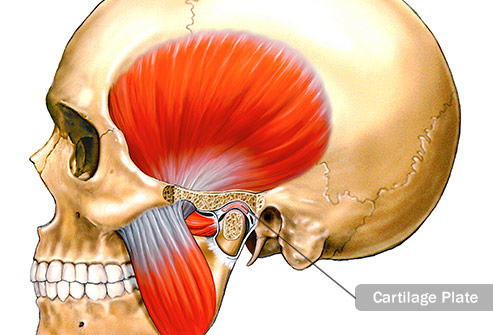Exercises can be an essential component for reducing jaw and facial pain due to temporomandibular (temp-or-oh-mandib-you-lar) joint disorder (TMD), commonly referred to as TMJ. This condition may cause pain, clicking in your jaw, and difficulty with basic functional tasks like eating and yawning. Treatment for TMD typically involves working to decrease joint pain and inflammation and restore normal motion to your jaw joint. Exercises for TMD can help restore normal motion and decrease pain or clicking and locking sensations in your jaw. Temporomandibular joint disorders and TMJ pain can prevent you from enjoying normal activities like eating and talking. It can make opening your mouth difficult or impossible. Most people with TMD can learn to manage it properly with postural correction and specific jaw exercises.
Physical Therapy and TMD:
Many people with TMD benefit from a physical therapy (PT) exercise program to restore normal movement to their jaw. Before starting any exercise program for your TMD, see your doctor and discuss with them how PT may help. They can refer you to PT if they think it will be of benefit.
Your physical therapist will assess your condition and teach you the proper things to do to safely get things moving again. He or she can provide anti-inflammation treatments, and exercises. Your PT will also tell you what to avoid if you have TMD. Your PT can show you how to do your exercises and tell you how often to do them. Many people benefit from performing TMD exercises two or three times a day.
Exercises to Try at Home:
- Tongue on Hard Palate and Clucking
This first exercise to perform for TMD is to place your tongue on the hard palate of your mouth. This is located just behind your teeth. Simply place your tongue behind your teeth on the hard palate and relax there. Your teeth should be slightly apart with your lips closed. Breathe slowly through your nose. Hold this position for six seconds and perform this for six repetitions. Some PTs recommend their patients make a clucking sound with their tongue as well. Simply attain the resting position with your tongue behind your teeth, and then cluck down with your lips slightly apart. Again, cluck six times.
- Jaw Opening with Resistance
Adding light resistance to your jaw opening and closing can help improve muscular function around your jaw. To perform this exercise, simply place two fingers on your chin and slowly open and close your mouth. Your fingers should put slight pressure on your jaw as you move; careful not to use too much force. Open and close your mouth with manual resistance six times.
You should also use your hands to provide manual resistance while moving your jaw laterally. To do this, place two fingers on the side of your jaw. Maintain your jaw in a slightly opened position, and gently press sideways on your jaw. Hold for six seconds and perform six repetitions in one direction. Then, repeat on the other side of your jaw.
Stop doing this exercise if you experience any lasting pain from this movement.
- Upper Cervical Distraction
Performing upper cervical distraction can help relieve neurovascular compression in your upper neck. This may help relax muscles, decrease tension, and ensure that your jaw can move properly.
To perform the exercise, place both hands behind your neck and interlace your fingers. Keep your hands there, and then nod your head down to flex your upper cervical spine. Gently provide a mild traction force with your hands by pulling up. Hold the flexed position for six seconds, and then return to the neutral position. Repeat the exercise six times.
- Cervical Retraction
It is recommended that you attain and maintain proper posture if you suffer from TMD. Keeping upright posture with your head directly over your shoulders ensures that your jaw can open and close fully with no obstructions. Cervical retraction is a great exercise for improving posture and helping with TMD symptoms. To perform the exercise, simply sit in a chair and draw your chin back. Be sure not to tip your head; imagine your head is on a shelf and you are simply pulling it straight back. Once your neck is fully retraced, hold this position for six seconds, and repeat it six times.
- Shoulder Retraction
Another great exercise to do for TMD (and for improved postural awareness) is the shoulder scapular retraction. To perform this exercise, sit upright in a chair and draw your shoulder blades together. Imagine you are trying to squeeze a pencil between your shoulder blades. Once your shoulder blades are pulled together in the back, hold the position for six seconds, and then relax. Repeat six times. This exercise can be made more challenging by using a resistance band and performing a rowing exercise with it. (You can get a resistance band from your physical therapist.)
- Neutral Posture Relaxation Exercises
If you have TMD, it can be helpful to utilize relaxation techniques to keep your neck and jaw muscles relaxed. This can help maintain your jaw in the neutral position with your tongue rested gently on your hard palate just behind your teeth. To do this exercise, simply try to keep your jaw in a relaxed position and perform slow and rhythmic nasal breathing.
Keep in mind that TMD exercises may cause slight discomfort, but they should not cause pain. If they do, you must stop the exercise and check in with your doctor or PT. Your TMD exercise program may need to be adjusted or tailored for your specific condition.
If you have TMD, visit your doctor and then get started on exercises to get your jaw and neck moving in the right direction. That way you can get back to your normal function and activity with little or no pain.
If you have further questions on TMD or if you would like to set an appointment with a PT for your jaw pain, call North Country Hospital Rehabilitation, 802-334-3260.
Sears, B., (February 2020). Physical Therapy Exercises for TMJ pain. Verywell health. Retrieved from: https://www.verywellhealth.com/exercise-program-for-tmd-and-tmj-pain-4587361


